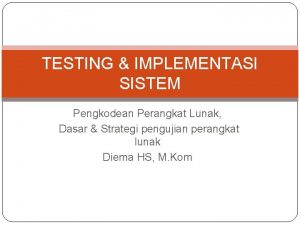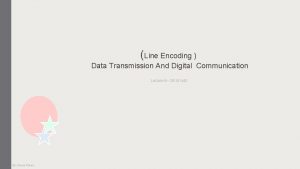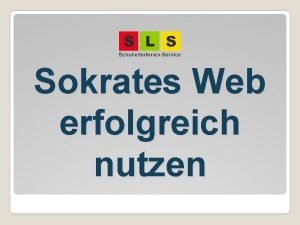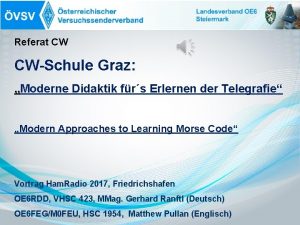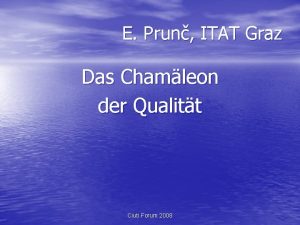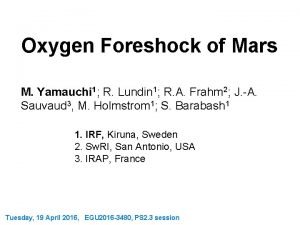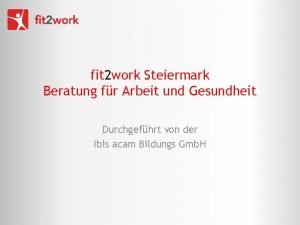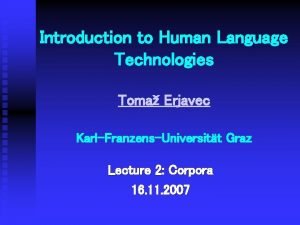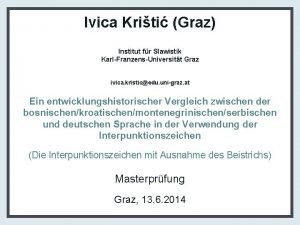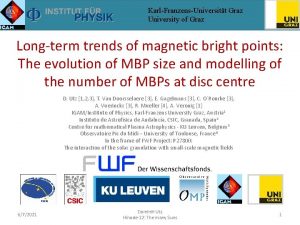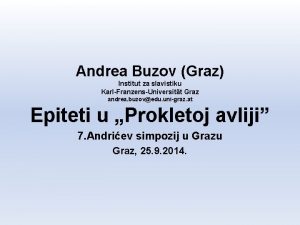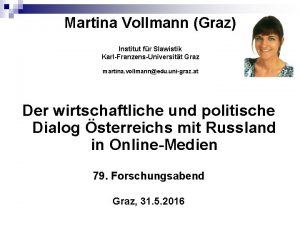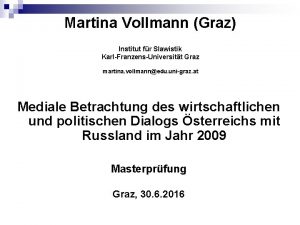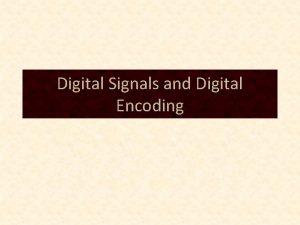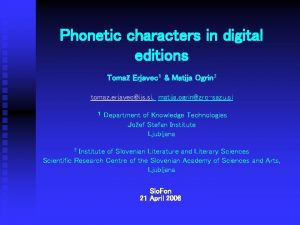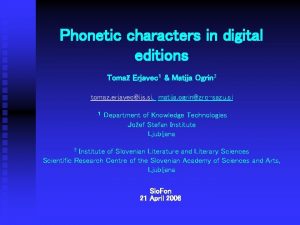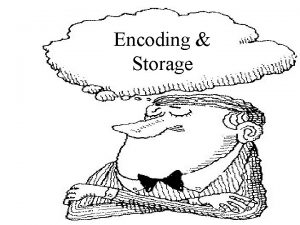Standards for digital encoding Toma Erjavec KarlFranzensUniversitt Graz












- Slides: 12

Standards for digital encoding Tomaž Erjavec Karl-Franzens-Universität Graz Lecture 2: TEI

What can the TEI do for you? The TEI provides a framework for the definition of multiple schemas n it defines and names several hundred useful textual distinctions n it provides a set of modules that can be used to define schemas making those distinctions n it provides a customization mechanism for modifying and combining those definitions with new ones using the same conceptual model

Where did the TEI come from? n n n Originally, a research project within the humanities u Sponsored by three professional associations u Funded 1990 -1994 by US, EU. Major influences u digital libraries and text collections u language corpora u scholarly datasets International consortium established June 1999 (see http: //www. tei-c. org/)

Goals of the TEI n n better interchange and integration of scholarly data support for all texts, in all languages, from all periods guidance for the perplexed: what to encode — hence, a user-driven codification of existing best practice assistance for the specialist: how to encode — hence, a loose framework into which unpredictable extensions can be fitted These apparently incompatible goals result in a flexible and modular environment

TEI Guidelines n n n A set of recommendations for text encoding, covering both generic text structures and some highly specific areas based on (but not limited by) existing practice A very large collection of element definitions with associated declarations for various schema languages a modular system for creating personalized schemas or DTDs from the foregoing for the full picture see http: //www. tei-c. org/Guidelines/

Legacy of the TEI n n n a way of looking at what ‘text’really is a codification of current scholarly practice (crucially) a set of shared assumptions and priorities about the digital agenda: u focus on content and function (rather than presentation) u identify generic solutions (rather than application-specific ones)

Users of TEI Over 100 projects listed on the TEI project page n Main areas: u digital libraries u text-critical editions u computer corpora u dictionaries n

Versions of the Guidelines n TEI P 3 (1994) first public version: u SGML + book (1200 pp) and soon also on the Web. n TEI P 4 (2002): u provides equal support for XML and SGML applications using the TEI scheme; u error correction, while maintaining backward compatibility: documents conforming to TEI P 3 will not become illegal when processed with TEI P 4. n TEI P 5 (2007): u implements more fundamental changes to the schemas, in line with current practice and identified problems, e. g. uses namespaces u no longer backward compatible (but a ~migration P 4 to P 5 XSLT exists) u Relax NG becomes the main schema langauge u continuous improvement. .

The general structure of TEI documents n Burnard, Driscoll, Rahtz, TEI Training Course, Sofia 2005: Slides for TEI overview

TEI Lite is a particular parametrisation of TEI that “provides 90% of the elements needed for 90% of users” n but better to make your own schema. . n

Lab session n take personlist data and write XSLT to transform it into tei. Lite

XSLT Erjavec: Course at ESSLII 2005 Annotation of Language Resources, Lecture II. XML-Related Recommendations: Formatting and Transforming XML n ZVON tutorial n W 3 schools n…


